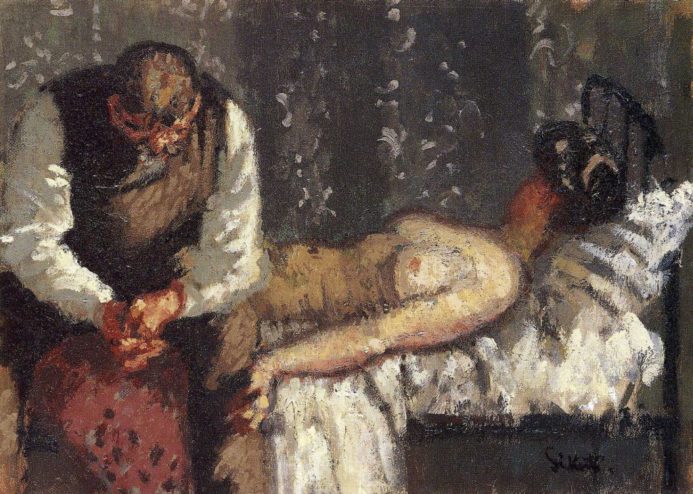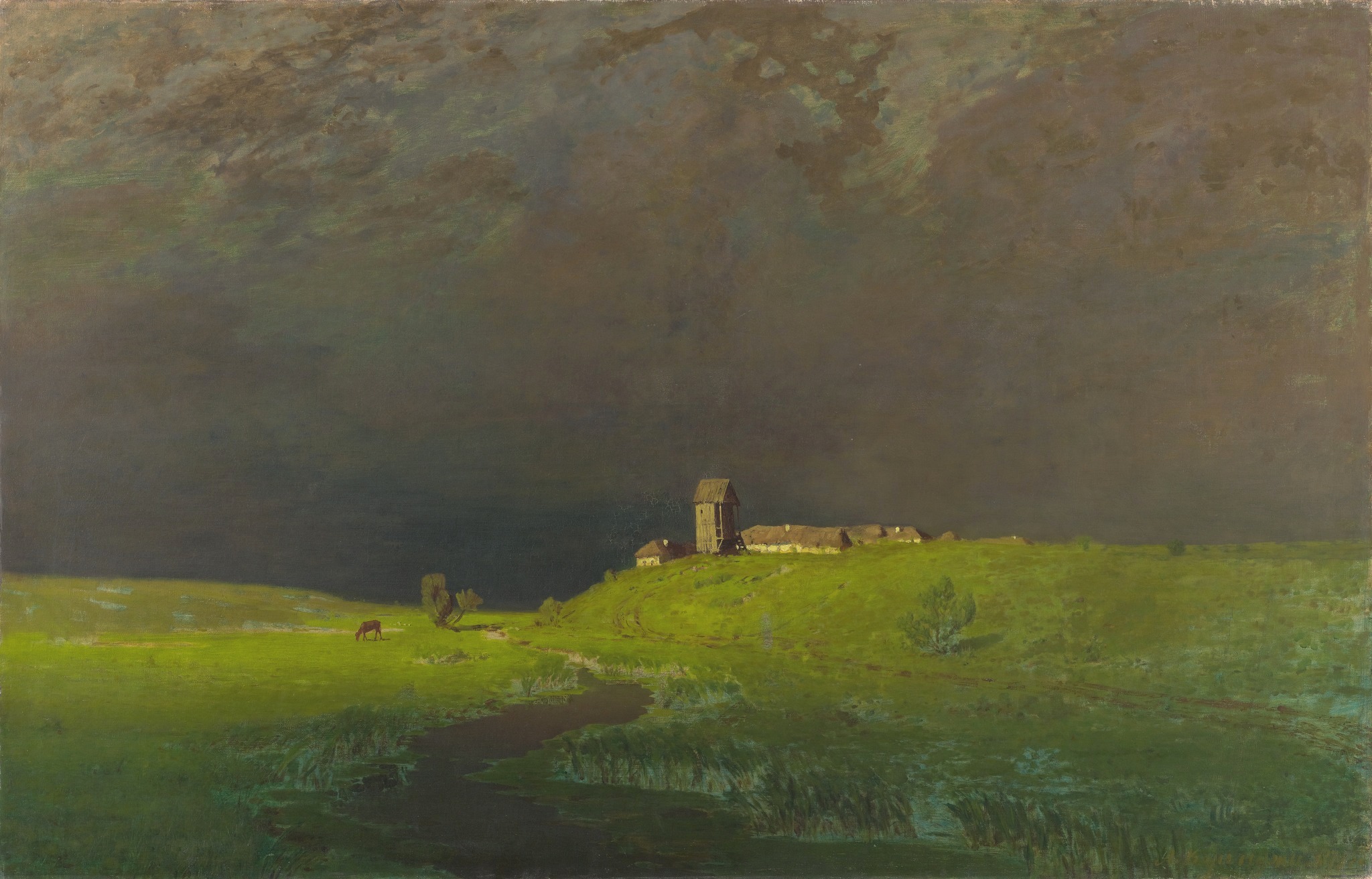What I find fascinating about art is how much the idea of audience interpretation comes into play. Whether it’s a detailed illustration, or something abstract, there’s always a sense that good art brings the viewer into this new world, for better or for worse.
In this case, in a much more overt way than the painting from earlier this week, we’re brought right into this new world. Depending on which title you use, “The Camden Town Murder” or “What Shall we do for the Rent,” your interpretation might be wildly different than mine.
Okay, as a long-time horror creator, I was thinking that death was here. I am sure I am sure your interpretation is different.
Without getting into the intricate and frankly fascinating side of what Sickert and others thought of this piece, the interesting vision for me is that this is a painting that sits firmly between impressionism and realism. That isn’t only in the brushstrokes and techniques that Sickert used, but in the concept itself.
Titles aside, much like a realistic painting Sickert has given us a concept with a lot to interpret. Was the woman just murdered, the killer contemplating what he has done? Is she merely resting, and the man’s contemplation is about their lot in life and how they can get out of the dregs? Is it simply a conversation, with the woman relaxing in the bright sun while the man speaks his mind?
It’s what I love about these kinds of pieces, that we as the audience are an integral part of the world within. I, with my dark side and fascination with all things strange see one side, but it’s just as easy to see a more innocent discussion taking place. Sure, her nudity could be taken as provocative, particularly in our society. But it’s a bright enough painting to hint that we could be wrong about the sexuality. In a private situation, many people find relaxation being nude, or at the very least don’t find it unusual to be naked around their loved one.
Sickert’s vision implies multiple interpretations are possible, and that is emphasized by the nature of the brushstrokes. The scene feels like it is or could be based on a real situation. Sickert paid close attention to color and light to render clothing, parts of the bed, and some details of the people. At the same time, his brushstrokes are very loose and broad, meant for grand widths over intricate designs. Just as much as his content can be interpreted in several ways, so can his techniques.
I find that this piece, and several of Sickert’s others in the series, could easily tell a story of something that happened. It could be violent, or it might just be a vision of two people in a private discussion.
How you see it is up to you. For me, I get a distinct feeling I should go read about Jack the Ripper.
References
See previous editions and subscribe to new articles here.
Read some fascinating information about Sickert and the painting
Walter Sickert
1908, Oil on canvas
256 mm x 356 mm
Yale Center for British Art, New Haven, CT
https://www.wikiart.org/en/walter-sickert/the-camden-town-murder-or-what-shall-we-do-for-the-rent



